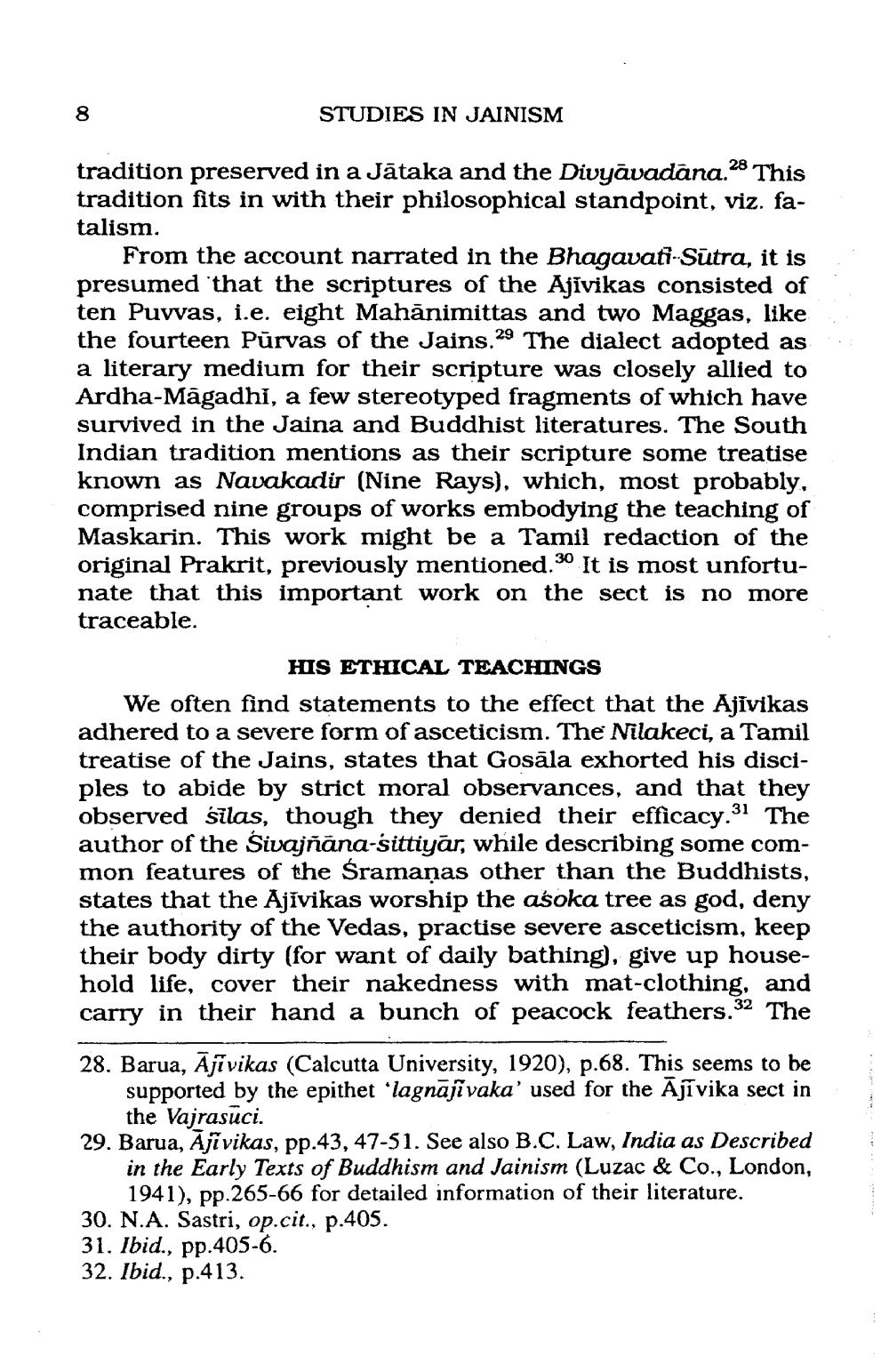________________
STUDIES IN JAINISM
tradition preserved in a Jātaka and the Divyāvadāna.28 This tradition fits in with their philosophical standpoint, viz. fatalism.
From the account narrated in the Bhagavati-Sutra, it is presumed that the scriptures of the Ajīvikas consisted of ten Puvvas, i.e. eight Mahānimittas and two Maggas, like the fourteen Purvas of the Jains.29 The dialect adopted as a literary medium for their scripture was closely allied to Ardha-Māgadhi, a few stereotyped fragments of which have survived in the Jaina and Buddhist literatures. The South Indian tradition mentions as their scripture some treatise known as Navakadir (Nine Rays), which, most probably, comprised nine groups of works embodying the teaching of Maskarin. This work might be a Tamil redaction of the original Prakrit, previously mentioned. 30 It is most unfortunate that this important work on the sect is no more traceable.
HIS ETHICAL TEACHINGS We often find statements to the effect that the Ajivikas adhered to a severe form of asceticism. The Nilakeci, a Tamil treatise of the Jains, states that Gosāla exhorted his disciples to abide by strict moral observances, and that they observed silas, though they denied their efficacy.31 The author of the Sivajñana-sittiyār, while describing some common features of the Sramaņas other than the Buddhists, states that the Ajīvikas worship the asoka tree as god, deny the authority of the Vedas, practise severe asceticism, keep their body dirty (for want of daily bathing), give up household life, cover their nakedness with mat-clothing, and carry in their hand a bunch of peacock feathers.32 The
28. Barua, Āji vikas (Calcutta University, 1920), p.68. This seems to be
supported by the epithet 'lagnājīvaka' used for the Ājīvika sect in
the Vajrasuci. 29. Barua, Ājivikas, pp.43, 47-51. See also B.C. Law, India as Described
in the Early Texts of Buddhism and Jainism (Luzac & Co., London,
1941), pp. 265-66 for detailed information of their literature. 30. N.A. Sastri, op.cit., p.405. 31. Ibid., pp.405-6. 32. Ibid., p.413.




